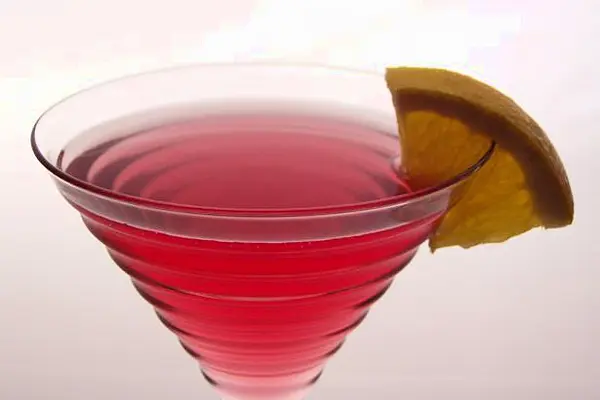Gregory Buda used to work five shifts a week behind the bar at the Dead Rabbit, the Lower Manhattan spot famous for its impeccable cocktails and voluminous Irish whiskey collection. “Now I only work two,” he says.
Do not interpret this as evidence of a light schedule. Buda is a multidisciplinary scholar exploring the art and science of booze, and his path to prominence as the “director of education and training manager” at that awards magnet of a saloon (and its Cuban-themed sister bar, BlackTail) involved a double major in chemistry and molecular biology at Clarkson University. Dude likes to keep busy.
When Buda’s not behind the stick, he’s teaching the trade to staffers and enlightening delighted patrons about the nuances of pot-still Irish whiskey. Or he may be in London, consulting on spots such as Dickie’s Bar at Corrigan’s Mayfair, which opened last month. Or traveling the globe as a professional photographer documenting the spirits world and much else.
Or perhaps he’s at his home in Brooklyn’s Carroll Gardens, organizing a bar that involves 360 degrees of liquor, in a roughly equivalent number of containers. “Last time I counted it was like 350 or 400 bottles,” Buda says. “Always coming and going.”
Seven months ago, when Buda moved in with his girlfriend, the dining room of her row house floor-through was, in his memory, “pretty bare.” He had a ready-made decorating solution—a set of pine shelves, each a bottle deep, that he’d built for his previous apartment. “I’ve always liked the idea of having a little bit of a display,” Buda says. “There are a couple of bottles that I tuck away [because] hopefully someday they’ll be worth some money. But my favorite part is hosting a dinner party with people I work with, friends, bartenders that are in from out of town. If they’re interested, we’ll pour a little taste and talk about it.”
“Most of the stuff on the shelves is not stuff I’ll do big pours of,” he continues. “It’s to taste and educate. If we have new staff come on at Dead Rabbit or BlackTail, when I go in for my shift, sometimes I grab a bottle or two and bring it in like, ‘Hey, this is something you probably never tried, let’s talk about it.’”
“We’ll start up here because it’s the logical point,” Buda says, indicating a shelf above the threshold to his bedroom. “These are all mezcals. Some of them are available in the U.S., but part of my motivation for collecting is I travel a lot for work and for pleasure. I try to always bring back a bottle or two of stuff you can’t necessarily find in the States.”
Rotating clockwise, past hung photographs of agave harvesters that he shot in Oaxaca, we come to a wall full of whiskey. The top rows are Scotch, “with the exception of the High West—those bottles are too tall to put in the shelves.”
One standout is Highland Park’s Dark Origins. “It’s the perfect dessert Scotch,” Buda says. “It’s like eating a piece of chocolate-cherry cake with smoke in it.” But in sentimental value, Dark Origins cannot compare to Isle of Jura 18, a single-malt he considers a pivotal acquisition.
“It’s the first bottle that I ever brought back from another country,” he says. “I busted that open when I got my Ph.D.” Back when he was studying plant-cell biology at Cornell, Buda picked up a bar job and happened to develop a passion for the most intoxicating of all applied sciences.
Below the Scotch, we find bourbon and rye. Below them are brandy bottles atop a cabinet purchased “at West Elm, I think,” which contains a relatively unruly amalgam of liqueurs and backup bottles. A corner shelf bearing bitters and bar tools brings us to the third wall, with its lineup of Irish whiskey above the doorway.
On the other side of the entryway, the Irish whiskey flows onto a shelf further stocked with “Japanese whisky and a couple oddballs that don’t really fit into categories.”
Turn, again, to face a richly strange collection of tequila, rum, and gin. “I rarely pull anything off this shelf to mix,” Buda says. Take, for instance, a gin from Dogfish Head brewery that includes hops among its botanicals. “They wanted to do a gin that was a shoutout to beer,” he explains. “I pour that as a taste for people. I’ve honestly never mixed a cocktail with it.”
Now, when mixing gin, he’ll reach for a bottle of floral and delicate G’Vine for a strong martini; New York Distilling’s navy-strength Perry’s Tot for a Negroni; or Seneca Drums, from Finger Lakes Distilling, for “one of the best gin and tonics I’ve ever had. They use grape spirits as the base for their gins, which is cool. It gives it a very different sort of texture than a grain-based gin.”
When his friends and family are mixing gin, or any other spirit in this room, they know to head directly to the small but proud bar cart along this wall. “It’s a little system I came up with with both my old roommates and my girlfriend,” Buda says. “If it’s on the cart, it’s up for grabs.”
What does Buda tend to grab for himself? “I don’t drink too much liquor at home,” he says. “But every once in a while, usually on Friday afternoons, my girlfriend and I will do a little cocktail hour before we start cooking dinner. We love old-fashioneds.”
Recipe, please! “The base is the Teeling small-batch Irish whiskey, which is blended Irish whiskey finished in rum casks. That’s the main spirit, and then we have a little bit of El Dorado 12-year-old rum, to boost that rum quality,” he says. “At Dead Rabbit, we do kind of an old-school version of old-fashioneds where, instead of using a sugar cube or a sugar syrup, we use a combination of dry curaçao and Bénédictine to sweeten it. I do the same thing here.”
It sounds great. It tastes even better. Does this drink have a clever name? “No,” Buda says. “I’m always awful with that.”
An Old-Fashioned Irish Whiskey Cocktail
1.5 oz. Teeling Whiskey Co. small-batch Irish whiskey0.5 oz. El Dorado 12-year-old rum0.5 oz. Bénédictine0.25 oz. Pierre Ferrand dry curaçao3 dashes Miracle Mile toasted-pecan bitters
Stir well with ice. Strain over ice into an old-fashioned glass. Garnish with an orange twist.
News by Bloomberg, edited by Hospitality Ireland









